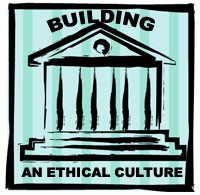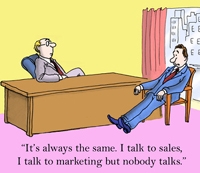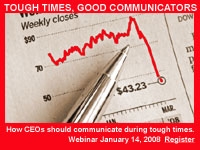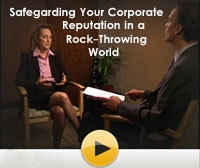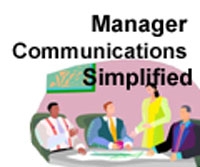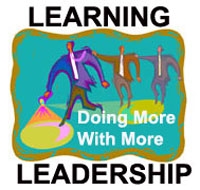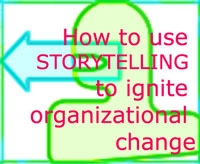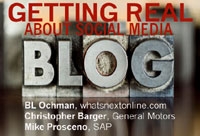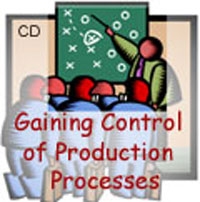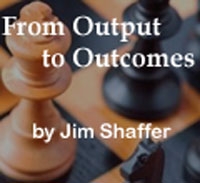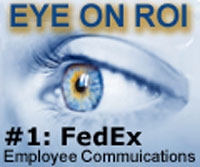Are you tired of struggling to get—and keep—people’s attention and convince them to take action?
You can improve your ability to connect with and influence others by learning how our brain works and applying some simple techniques based in neuroscience.
Forget about right brain/left brain, an archaic concept. Instead, the “social brain” drives our thinking and our actions.
This session will briefly cover basic neuroscience principles geared toward non-scientists. We’ll then focus on how you can apply those principles to help yourself and others think better and perform at higher levels. By taking these actions, you can improve your influencing skills and actions.
Learn how to:
- Increase your self-awareness to improve your ability to influence
- Design the best environment for influencing
- Speak and write with intent to make better connections with others
- Make your messages more compelling and memorable
- Listen more effectively
- Slow down and quiet the brain to tap into the unconscious and speed up gaining insights and influencing
- Ask powerful thinking questions that increase focus and gain greater clarity
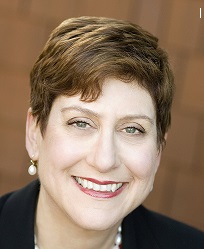 Your webinar leader, Liz Guthridge is an award-winning consultant, leadership coach and trainer who’s studied with Dr. David Rock of The NeuroLeadership Institute, Dr. BJ Fogg, founder of the Stanford Persuasive Technology Lab and other luminaries in the fields of employee communication and organizational change. Liz has extensive experience supporting leaders improve their communication, develop new habits and adapt their organizations.
Your webinar leader, Liz Guthridge is an award-winning consultant, leadership coach and trainer who’s studied with Dr. David Rock of The NeuroLeadership Institute, Dr. BJ Fogg, founder of the Stanford Persuasive Technology Lab and other luminaries in the fields of employee communication and organizational change. Liz has extensive experience supporting leaders improve their communication, develop new habits and adapt their organizations.
Liz Guthridge is an award-winning leadership coach, consultant and trainer with extensive change, employee communication and organization development experience.
As the founder of the boutique firm Connect Consulting, Liz works with leaders at all levels to help them move from blue-sky thinking to greener pastures actions. With her support, Liz’s clients enhance the clarity of their ideas, plans and actions. Her clients also improve the quality of their conversations, their ability to influence and their skill in building habits.
Liz contributed the chapter “Change Through Smart-Mob Organizing: Using Peer-by-Peer Practices to Transform Organizations” to the book The Change Champion’s Field Guide (Wiley 2013).
Besides being a certified coach in brain-based coaching, she is serving as a teaching assistant for the Executive Masters in NeuroLeadership program through the NeuroLeadership Institute co-founded by Dr. David Rock. Liz also is a graduate of Dr. BJ Fogg’s Persuasion Boot Camp and is one of his Tiny Habits™ coaches.
- Do your communication efforts tend to be “one-offs” that consume a lot of time and effort but don’t always generate the results you had hoped for?
- Do senior leaders’ eyes glaze over when you explain your latest “big idea”?
- Do you wish you had more time to spend learning about new things and less putting out fires?
While strategic planning is probably at the top of the list of things that most communicatorsdon’t want to do, the reality is that when done well, strategic planning can not only help to save time, and money, but can increase the odds of achieving desired communication outcomes. And, the good news is, effective planning doesn’t have to take weeks or months or result in dozens of meetings. In fact, the process can actually be quite simple and straightforward.
This webinar will offer easy-to-follow steps and provide practical tips and advice that can be used for any planning effort—from developing an internal communications plan to developing a marketing campaign—or even focusing on a single initiative.
What You Will Learn:
- How to position the plan for success by starting with the end in mind
- Why your mission statement is your friend
- How and why to align your efforts with your organization’s strategic plan
- A step-by-step process for developing a strategic plan
- Developing a process for plan updates – how to keep the plan alive
- How to build measurement into the plan
- How to make sure things get done!
Who Should Attend
- Communicators, PR and marketing professionals at all levels.
Presented by:
 Linda Pophal is CEO of Strategic Communications, and a marketing and communication strategist with 20+ years experience in healthcare, education and not-for-profit marketing and communications. She has managed all aspects of corporate and marketing communication including employee communication, public relations, advertising, social media, market research, brand management and strategic planning. Pophal has developed and implemented strategic business, marketing and communication plans for healthcare and educational organizations and consultants, generating measurable results based on client goals. She has developed and delivered training programs for national and local audiences on all aspects of communication management and employee relations. She is author of The Essentials of Corporate Communications and PR and Complete Idiot’s Guide to Strategic Planning.
Linda Pophal is CEO of Strategic Communications, and a marketing and communication strategist with 20+ years experience in healthcare, education and not-for-profit marketing and communications. She has managed all aspects of corporate and marketing communication including employee communication, public relations, advertising, social media, market research, brand management and strategic planning. Pophal has developed and implemented strategic business, marketing and communication plans for healthcare and educational organizations and consultants, generating measurable results based on client goals. She has developed and delivered training programs for national and local audiences on all aspects of communication management and employee relations. She is author of The Essentials of Corporate Communications and PR and Complete Idiot’s Guide to Strategic Planning.
Connection is the force that inspires employees to give their best efforts and align their behavior with organizational goals. In this webinar, Michael Lee Stallard and Jason Pankau describe how Steve Jobs of Apple, Ed Catmull of
Pixar, A.G. Lafley of P&G, as well as other successful leaders, communicate to connect with employees.
Learn how you can help leaders by:
- Communicating an “Inspiring Identity” that makes employees feel proud of their organization,
- Communicating with “Human Value” that makes employees feel valued as human beings and not just as human doings,
- Communicating to increase “Knowledge Flow” that make employees feel informed and heard in ways that improve employee engagement, the quality of decisions made and stimulate innovation
Presented by:
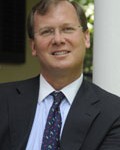 Michael Lee Stallard is the co-founder and president of E Pluribus Partners, a consulting firm based in Greenwich, Connecticut Michael’s work has also been featured in the media including The Wall Street Journal, The New York Times, Human Resource Executive, The Economic Times (India), Developing HR Strategy Journal (UK), Rotman (Canada) and Fox Business Now.
Michael Lee Stallard is the co-founder and president of E Pluribus Partners, a consulting firm based in Greenwich, Connecticut Michael’s work has also been featured in the media including The Wall Street Journal, The New York Times, Human Resource Executive, The Economic Times (India), Developing HR Strategy Journal (UK), Rotman (Canada) and Fox Business Now.
Jason Pankau is a leading authority on leadership and teams as they relate to employee and customer engagement. Jason’s clients have included Johnson & Johnson, NorthwesternUniversity, UBS and several hedge funds.
The reality is that everything you do and say communicates something. The most successful leaders know that communication is the competency most critical to moving businesses forward, is the best defense in managing change and difficult situations, and is the driving force in engaging others. Since you are always communicating – you might as well be great at it. This luncheon is a unique opportunity to learn winning strategies you can use every day and engage in thought-provoking discussion so you can differentiate yourself, elevate your leadership impact, and accelerate business results. David Grossman will share practical insights, best practices, and proven tools to help top leaders differentiate themselves, including:
- The three fundamental truisms every leader must understand
- Three myths leaders believe, and that every communicator must address head-on
- The most common traps leaders face
- The Great Eight communication basics; What great leaders do
- David Grossman ABC, APR, Fellow PRSA, President & Principal thoughtpartner™ of the Grossman Group
 I’m president and founder of The Grossman Group, an award-winning Chicago-based communications consultancy focusing on organizational consulting, strategic leadership development and internal communications. With a roster of Fortune 500 clients including Cisco Systems, Heinz, Intel, Lilly, Lockheed Martin, McDonald’s, WellPoint and Virgin Atlantic, we work at the highest levels within organizations to utilize communications as a strategic business tool to help engage employees and drive performance. I’ve spent my entire career helping leaders use communications to be more successful and after working with leaders for more than 20 years, I’ve seen a lot. Many of my clients have been telling me that that I should write a book that encapsulates the insights, lessons and strategies I’ve gained over the years so that other leaders — from seasoned veterans to first-time managers — could benefit. This is finally coming to fruition and my book, “You Can’t Not Communicate: Leadership Solutions that Power the Fortune 100” was published in late 2009. Prior to founding The Grossman Group in 2000, I was director of communications for McDonald’s, where I helped to evolve what was the Publications Department into a world-class internal communications function and pioneered the “agency model,” building a leadership communications support function for the company’s senior executives. I also teach the only graduate-level course in internal communications in the U.S. at Columbia University. I’m thrilled to a part of the Communitelligence community and look forward to sharing ideas and learning from all the great minds that are gathered here.
I’m president and founder of The Grossman Group, an award-winning Chicago-based communications consultancy focusing on organizational consulting, strategic leadership development and internal communications. With a roster of Fortune 500 clients including Cisco Systems, Heinz, Intel, Lilly, Lockheed Martin, McDonald’s, WellPoint and Virgin Atlantic, we work at the highest levels within organizations to utilize communications as a strategic business tool to help engage employees and drive performance. I’ve spent my entire career helping leaders use communications to be more successful and after working with leaders for more than 20 years, I’ve seen a lot. Many of my clients have been telling me that that I should write a book that encapsulates the insights, lessons and strategies I’ve gained over the years so that other leaders — from seasoned veterans to first-time managers — could benefit. This is finally coming to fruition and my book, “You Can’t Not Communicate: Leadership Solutions that Power the Fortune 100” was published in late 2009. Prior to founding The Grossman Group in 2000, I was director of communications for McDonald’s, where I helped to evolve what was the Publications Department into a world-class internal communications function and pioneered the “agency model,” building a leadership communications support function for the company’s senior executives. I also teach the only graduate-level course in internal communications in the U.S. at Columbia University. I’m thrilled to a part of the Communitelligence community and look forward to sharing ideas and learning from all the great minds that are gathered here.
No one has to tell you what a great speech is, right? You know one when you hear it.
Well you’re about to hear a bunch of them—and you’re going to learn from them, guaranteed.
Vital Speeches of the Day editor David Murray presents “Speechwriting Jam Session 2010,” 75 entertaining, inspirational and instructive minutes that will have the hair standing up on the same arm you’re scribbling notes with. We’ll discuss, even debate, what makes these great speeches great.
Through dramatic readings from winners of the 2010 Cicero Speechwriting Awards and highlight reels from the Vital Speeches YouTube site, Murray will help us reawaken the giants within us by sharing together excerpts from speeches contemporary and classic, famous and rare. (In the true spirit of an improvisational jam session, you’ll even have a chance to nominate some of your own YouTube favorites, so come prepared!)
You’ll come away from this session with:
• Concrete examples showing how leaders are addressing the issues of this particular moment in business, politics and society.
• A stockpile of examples—video and text—to show reticent speakers: rhetorical tactics that have passed the test and been pulled off by the best.
• Renewed enthusiasm and an expanded sense of what’s possible in leadership communication.
• And a goose bumps, guaranteed.
SESSION LEADER:
- David Murray writes and speaks about communication—business, political and personal. He’s editor of Vital Speeches of the Day, a monthly collection of the best speeches in the world. He writes about sports, people, politics and travel for magazines, newspapers and websites. publications and websites. And he discusses the communication life at his popular personal blog, Writing Boots.http://www.vsotd.comhttp://writingboots.typepad.com/writing_boots/profiles/http://writingboots.typepad.com/
Executive communications success truly rises and falls on how well you are able to “get into the heads” of your executives and earn their trust. Your ability to put great words in their mouths has as much to do with interpersonal communication as executive communications. Whether you’re a natural extrovert or spend your days cowering in your cubicle, this session will help you enhance your relationships with executives. You’ll leave with a list of techniques that you can start using immediately.
What you will learn:
- Blueprints for creating rapport and camaraderie with the CEO, no matter your station, without seeming unctuous or overly eager.
- Specific strategies on how to seen as a strategic communicator, not just a scribe. This will include thoughts on how to make sure the CEO sees you as smart … but not a smart @ss.
- Tips for managing senior executives and all of the other staff members that will either help ensure your success or doom you to failure.
- Tactics that will help you better understand what it’s like to be a public speaker. There’s nothing like a little empathy to improve job performance.
- Plans to turn the annual list of random speeches into a coherent communications strategy.
SESSION LEADER:
 Christine Solie, VP-Financial and HR Communications, The PNC Financial Services Group, has more than 20 years of public relations experience with Fortune 500 companies. She has had two speeches published in Vital Speeches of the Day and earned two Silver Anvils for work not related to speechwriting.
Christine Solie, VP-Financial and HR Communications, The PNC Financial Services Group, has more than 20 years of public relations experience with Fortune 500 companies. She has had two speeches published in Vital Speeches of the Day and earned two Silver Anvils for work not related to speechwriting.
With the passage of new laws and regulations to curb white-collar crime, executives are paying increasing attention to corporate governance and compliance programs. But what role do compliance programs play in employee behavior?
Research shows that compliance programs can actually do more harm than good when it comes to actual employee behavior. However, carefully designed compliance programs, supported by other elements of culture, can be instrumental in building an ethical culture that not only drives ethical employee behavior but also employee engagement and business results.
You will learn:
- Key research on the connections between ethics and employee engagement
- Four building blocks of ethical culture
- Elements of an effective ethics/compliance program
- Links between ethical culture and employee engagement
- Importance of ethical leadership and trust
- How character gets defined in leaders
- What is moral language, and how to use it
- Three strategies that can make a real difference in creating an ethical culture
- Three steps executives and managers can take to encourage ethical behavior within their organizations and departments
- Three audience segments you need to consider when designing ethics/compliance initiatives
Kate answers real-world questions on:
- Best practices in talking about ethics with employees
- How to reward employees’ for good ethical behavior
- Explaining the success of the hit TV show The Apprentice
- What channels work best when delivering the ethical rules of an organization
- Advice to those in an organization who have either observed or have strong suspicions of unethical behavior in their company
Presented by:
 Kate Nelson is a consultant, Wharton professor and author specializing in ethics program design and strategic organizational communications.
Kate Nelson is a consultant, Wharton professor and author specializing in ethics program design and strategic organizational communications.
- Formerly a senior fellow in ethics at The Wharton School, University of Pennsylvania, she currently teaches business ethics at Wharton Executive Education and to executive MBA students at the University of Delaware.
- Co-author, with Pennsylvania State University Professor Linda Klebe Trevino, of Managing Business Ethics (published by Wiley; 4th edition due in August 2006)
- Consultant on ethics and communications for 15 years
- Formerly a principal and communication practice leader for Mercer HR Consulting in Philadelphia
- Formerly vice president and head of worldwide HR communications at Citicorp in New York City; held similar positions at Merrill Lynch and Honeywell
- Guest speaker on ethics and values at many conferences and organizations, including the Conference Board, World@Work, Society for Human Resources Managers, Young Presidents’ Organization, the Ethics’ Officers Association and Wharton Executive Education.
- She has designed and/or conducted ethics training programs for numerous business schools, including Harvard, University of Chicago, Columbia, Vanderbilt, NYU, MIT, Temple and Northwestern; and for numerous organizations, including GE, Johnson & Johnson, J.P. Morgan, Prudential Securities, Morgan Stanley, Aviva, Degussa, Shell Oil, AC Nielsen, Glaxo SmithKline, Citibank, Dupont, Lockheed Martin and NASA.
- The ethics game that Kate created at Citicorp, The Work Ethic, was awarded the Gold Quill of Excellence by the International Association of Business Communicators (IABC) in 1987 and was featured in numerous media, including the Wall Street Journal, Financial Times and Fortune.
- Communications she created have been recognized by the American Institute of Graphic Artists, the Art Directors Guild, the IABC, and have been exhibited in the Whitney Museum of Art in New York.
- She received her B.A. from the College of Mount St. Vincent in New York City and has been affiliated with Wharton since 1991. Kate also is a 2002 graduate of Leadership, Inc., a Philadelphia organization that mobilizes the private sector on behalf of the community and trains executives to serve on boards of directors.
- She is a member of the Council of Communication Management (CCM).
Ok, if we professional communicators would all come clean, we would admit we’ve been paying a lot more attention to the sexy new digital communication workplace tools than we have to that oldest but most important social medium, face-to-face communications.
Unfortunately, practice and research says ignoring manager communication is a bad idea. In the midst of so much change, workplace stress, confusion and mistrust, there is a powerful human case to be made for attending to this most basic kind of communication. Gallup research shows that “managers from hell” are creating active disengagement, costing the U.S. an estimated $450 billion to $550 billion annually.
According to ROI Communication’s annual benchmark survey:
- One in four managers is not considered a credible source of information
- Only 55% offer recognition and appreciation for a job well done
- Only 25% clearly understand their communication role (which coincides with the fact that only 27% receive communication training), and
- Only 18% are measured for communication performance in their performance reviews
Roger D’Aprix has been preaching the face-to-face communication mantra since he was a communication manager at Xerox in the late 1970s. He’s convinced today’s workers want and expects more than command and control, top-down communication. In fact, if face-to-face communication is failing, there is an excellent chance that all of the other forms of communication in the organization are also failing.
Drawing from his new book, Creating an Engaged Workforce: the Face-to-Face Communication Toolkit, Roger will arm you with the basic strategies and tools to either launch or reignite your organization’s manager communication program in ways that will prepare them to fulfill the all-important role of interpreter for their people. It’s time to fire up your face-to-face communication program.
What You Will Learn:
- Why human satisfaction with work and business success both demand a face-to-face strategy for delivering critical issues to employees
- How to build the business case and form the key team you need to seriously impact face-to-face communication in your organization
- Why too many face-to-face communication programs fail and the secret sauce of those that sing
- The key tools and processes you need to make your face-to-face communication program a winner
Presented by:
 Roger D’Aprix is internationally known as a practitioner in the theory, strategy and practice of employee communication. His ground-breaking work at Xerox Corporation beginning in the 1970s qualifies him as one of the pioneers in employee engagement. As a communication consultant, lecturer and author he has assisted scores of Fortune 500 companies in developing their communication strategies and designing their communication training.
Roger D’Aprix is internationally known as a practitioner in the theory, strategy and practice of employee communication. His ground-breaking work at Xerox Corporation beginning in the 1970s qualifies him as one of the pioneers in employee engagement. As a communication consultant, lecturer and author he has assisted scores of Fortune 500 companies in developing their communication strategies and designing their communication training.
In 1998 IABC named him ‘one of the most influential thinkers in the communication profession in the last 25 years.’ He was named an IABC Fellow, that organization’s highest honor, in 1978. For 15 years he held senior positions with two of the leading human resources consulting companies. He served as vice president and global practice leader for Towers Perrin’s human resource communication practice and as principal and service developer for Mercer Human Resource Consulting.
Before that, he led employee communication for Xerox Corporation and held executive communication positions at General Electric and Bell and Howell. Presently, in addition to his own consultancy, D’Aprix & Co., he is affiliated with ROI Communication as a member of its advisory board. ROI is a global consultancy that specializes in internal communication strategy and practice. He divides his time between residences in Rochester, New York and New York City.
How effective CEO presentations can help companies rebound during an economic downturn
When a company’s earnings and stock price are on the rise, it may not be critically important how well a CEO performs behind a lectern, in front of cameras and microphones, or at a hearing table. But as earnings and stock price head south, a CEO’s ability to inspire confidence through speeches and presentations can prove essential to a company’s ability to survive and recover. CEOs who communicate well can, at the very least, buy the time needed to put an effective turnaround strategy in place.
With the economy battered by the credit crisis, high fuel prices, and other maladies, growing numbers of corporate leaders face the challenge of finding ways to inspire key audiences who are both very worried and extremely important—employees, analysts, stockholders, regulators, and the press.
This webinar offers some very specific, hands-on advice how CEOs should communicate during tough times. The advice is based on the experience of key CEO’s who have been there and done that –Former CEOs Lee Iacocca of Chrysler and Champ Mitchell of Network Solutions, Jack Welch of GE, as well as current CEOs John Chambers of Cisco Systems and Brightpoint’s Robert Laikin. All used first-person communications effectively to turn companies around or dramatically boost their performance.
Sun Microsystems CEO Scott McNealy once said, “Communication needs to be a core competency of any business. It starts with the CEO.”
You Will Learn How CEOs Can:
- Make communication a priority.
- Be proactive, not reactive
- Handle problems and mistakes.
- Develop and present a recovery plan.
- Match their presentations to their audience
- and much more
Presented by:
 Dr. Jeff Porro, Ph.D. has written “first-person speeches” and provided communication strategies for the CEOs of Sodexo, Eastman Chemicals, the McGraw Hill Companies, Office Depot, the COO of General Mills, as well as for diplomats such as former UN Secretary General Kofi Annan, and other government leaders, and presidents of some of the nation’s leading trade and professional associations. He helps corporate, government and nonprofit leaders take their visions to a new level, moving key audiences with speeches that engage minds, open eyes, touch hearts and awaken the spirit. In addition to offering his expertise to world and business leaders, he has extended his skills to the world of entertainment. Dr. Porro discovered and researched the true story of a Jim Crow-era African American college debate team, and helped turn it into the 2007 feature film The Great Debaters starring Denzel Washington.
Dr. Jeff Porro, Ph.D. has written “first-person speeches” and provided communication strategies for the CEOs of Sodexo, Eastman Chemicals, the McGraw Hill Companies, Office Depot, the COO of General Mills, as well as for diplomats such as former UN Secretary General Kofi Annan, and other government leaders, and presidents of some of the nation’s leading trade and professional associations. He helps corporate, government and nonprofit leaders take their visions to a new level, moving key audiences with speeches that engage minds, open eyes, touch hearts and awaken the spirit. In addition to offering his expertise to world and business leaders, he has extended his skills to the world of entertainment. Dr. Porro discovered and researched the true story of a Jim Crow-era African American college debate team, and helped turn it into the 2007 feature film The Great Debaters starring Denzel Washington.
As head of Porro Associates, LLC, Dr. Porro draws on his background as a research scholar and a Washington policy analyst to weave persuasive arguments. At the same time, his creative writing has given him the skill and empathy to capture a speaker’s voice and evoke the speaker’s passion. Dr. Porro holds a Ph.D. in political science from U.C.L.A..
 Robert Laikin, founder of Brightpoint, has served as a member of Brightpoint’s board of directors since its inception in August 1989. Mr. Laikin has been Chairman of the Board and Chief Executive Officer of the Company since January 1994. Mr. Laikin was President of Brightpoint from June 1992 until September 1996 and Vice President and Treasurer of Brightpoint from August 1989 until May 1992. From July 1986 to December 1987, Mr. Laikin was Vice President, and from January 1988 to February 1993, President of Century Cellular Network, Inc., a company engaged in the retail sale of cellular telephones and accessories. His honors and awards include:
Robert Laikin, founder of Brightpoint, has served as a member of Brightpoint’s board of directors since its inception in August 1989. Mr. Laikin has been Chairman of the Board and Chief Executive Officer of the Company since January 1994. Mr. Laikin was President of Brightpoint from June 1992 until September 1996 and Vice President and Treasurer of Brightpoint from August 1989 until May 1992. From July 1986 to December 1987, Mr. Laikin was Vice President, and from January 1988 to February 1993, President of Century Cellular Network, Inc., a company engaged in the retail sale of cellular telephones and accessories. His honors and awards include:
- Recipient of the William L. Haeberle Entrepreneurial Legacy Award for 2008
- Inducted into the Central Indiana Business Hall of Fame in 2008
- Received a Stevie Award for Best Turnaround Executive in 2007
- Recipient of the Distinguished Entrepreneur Award by the Kelley School of Business Alumni Association (1999)
- Recipient of the Indiana Entrepreneur of the Year Award (1995)
- Received an honorable mention in 1995 Inc. Magazine National Entrepreneur of the Year Award
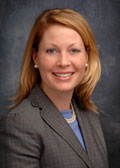 Kelly R. Lang is Director of Strategic Communications in the Corporate Communications department of Cisco Systems. Ms. Lang joined Cisco in 2001 as Marketing Communications Manager and in 2003 joined the Office of the President as John Chambers’ Executive Communications Manager. Today, Ms. Lang is responsible for the Executive Communications and Operations functions including the Office of the Chairman and CEO (OCC), the Chief Financial Officer (CFO), and the Chief Globalisation Officer (CGO). Prior to joining Cisco, Ms. Lang was Program Manager for a Global Event Marketing Organization, Nth Degree, from 1998-2000. From 1996-1998, Ms Lang was Assistant Director of Administration with RCI Group, Inc. after graduating with a Bachelor of Arts degree from the University of Maryland, where she was recognized with outstanding student achievements including Maryland’s Talent and Tutor Search Program.
Kelly R. Lang is Director of Strategic Communications in the Corporate Communications department of Cisco Systems. Ms. Lang joined Cisco in 2001 as Marketing Communications Manager and in 2003 joined the Office of the President as John Chambers’ Executive Communications Manager. Today, Ms. Lang is responsible for the Executive Communications and Operations functions including the Office of the Chairman and CEO (OCC), the Chief Financial Officer (CFO), and the Chief Globalisation Officer (CGO). Prior to joining Cisco, Ms. Lang was Program Manager for a Global Event Marketing Organization, Nth Degree, from 1998-2000. From 1996-1998, Ms Lang was Assistant Director of Administration with RCI Group, Inc. after graduating with a Bachelor of Arts degree from the University of Maryland, where she was recognized with outstanding student achievements including Maryland’s Talent and Tutor Search Program.
Ms. Lang is passionate about business and how communication helps drive business strategy to become a change agent for the organization. Her focus on process, operational excellence and hiring the right talent to support highly visible executives helps drive a more integrated, cross-functional communication effort that highlights the increasingly complex and important role of the communications professional.
Who Should Attend
This webinar is primarily aimed at communicators and executives trying to cope with a slowing economy, including external communications, internal communications, and shareholder communications.
We all live in glass houses. Reputation failure is no longer a threat that looms large for companies only in high-risk industries and activities. It has become an all-too-familiar scenario for all companies in all corners of the world. A Weber Shandwick proprietary analysis revealed that over three-quarters (79 percent) of the world’s number-one most admired companies lost their crowns over the past five years in their respective industries.Over three-quarters (79 percent) of the world’s number-one most admired companies lost their crowns over the past five years in their respective industries. The corporate reputation “stumble rate” continues to rise. Recent corporate crises have demonstrated that a company’s reputation can be destroyed in seconds. A mishandled response, inappropriate act, product tampering, or poorly timed financial disclosure all have the power to instantly tarnish a respected reputation. However, the well managed and reputation-conscious company does not need to stand defenseless when faced with a damaged reputation. This web conference will identifiy and describe the actions companies and their leaders can take to safeguard their corporate reputations, and rebuild their reputations and restore their good names after a crisis. Read Q&A with Dr. Gaines-Ross.
What You Will Learn:
- Why reputation is more fragile than ever,and why it matters to a company’s valuation, well-being, and permission to exist
- What triggers reputation loss and why are so many companies struggling with tarnished reputations?
- What can a company do to safeguard its reputation from loss?
- What are the most important steps in recovering reputation
- What role should leaders, communication, marketing and PR professionals play in reputation recovery and sustainability
Why you should purchase:
Media coverage of reputation alone has increased 108 percent over the past five years. Reputation management is now considered a legitimate body of knowledge, with a number of emerging new disciplines, including reputation recovery. Also, the sheer number and severity of corporate falls from grace in the last few years — coupled with the emergence of revolutionary ways of transmitting information, influential micro-constituencies and widespread mistrust of business — have magnified the need for a viable framework for the repair and recovery of damaged company reputations.
Presented by:
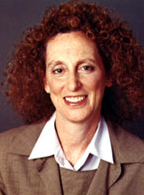 Dr. Gaines-Ross is one of the world’s most widely recognized experts on CEO reputation — how CEO reputations are built, enhanced and protected. She spearheaded the first comprehensive research on CEO reputation and its impact on corporate reputation and performance. She developed Weber Shandwick’s first global corporate reputation study — “Safeguarding Reputation™,” which identifies strategies for sustaining and recovering corporate reputation. Dr. Gaines-Ross is the author of CEO Capital: A Guide to Building CEO Reputation and Company Success (John Wiley & Sons, 2003) and Corporate Reputation: 12 Steps to Safeguarding and Recovering Reputation (www.corporatereputation12steps.com, John Wiley & Sons, 2008).
Dr. Gaines-Ross is one of the world’s most widely recognized experts on CEO reputation — how CEO reputations are built, enhanced and protected. She spearheaded the first comprehensive research on CEO reputation and its impact on corporate reputation and performance. She developed Weber Shandwick’s first global corporate reputation study — “Safeguarding Reputation™,” which identifies strategies for sustaining and recovering corporate reputation. Dr. Gaines-Ross is the author of CEO Capital: A Guide to Building CEO Reputation and Company Success (John Wiley & Sons, 2003) and Corporate Reputation: 12 Steps to Safeguarding and Recovering Reputation (www.corporatereputation12steps.com, John Wiley & Sons, 2008).
Before joining Weber Shandwick, Dr. Gaines-Ross was Chief Knowledge & Research Officer Worldwide at Burson-Marsteller and Marketing & Communications Director at Fortune. At Fortune, she initiated several groundbreaking research programs including “Leveraging Corporate Equity” and “Brands at the Crossroads.” She is also widely recognized for her strategic insights into and analysis of Fortune’s Most Admired Companies Survey. Dr. Gaines-Ross was a 1995 winner of Time Inc.’s President’s Award. She is also the co-author of FORTUNE Cookies: Management Wit and Wisdom, which was published by Vintage Books.
Dr. Gaines-Ross’ work has been featured in the Financial Times, The Times (London), The Wall Street Journal, The New York Times, The Economist, Fortune, BusinessWeek, Wired, Advertising Age, PRWeek, Forbes, The Christian Science Monitor, USA Today, Chief Executive, Business 2.0, Across the Board and in many other publications around the world. She has also appeared on CNN and CNBC.
Dr. Gaines-Ross is a frequent public speaker on CEO and corporate reputation management. She has lectured at The Anderson Graduate School of Management at UCLA, USC, Wharton School of Business, New York University and Columbia University. Dr. Gaines-Ross was also a speaker at the 2003 World Economic Forum Governor’s Meeting. She is a member of Ethical Corporation’s Advisory Board, serves on the Executive Advisory Panel of Corporate Reputation Review and was inducted into the Academy of Women Achievers of the YWCA of the City of New York. Dr. Gaines-Ross has been named one of the “100 Most Influential People in Business Ethics for 2007” by Ethisphere Magazine.
Dr. Gaines-Ross created http://www.reputationRx.com, the Web site devoted exclusively to reputation news and information, and her blog can be found at http://www.reputationXchange.com.
Who should purchase:
- Corporate communications, marketing and public relations professionals Executives at all levels and areas of the company who need to understand the new “stumble-rate” of corporate reputations, and be prepared with a realistic roadmap to reputation recovery that can stabilize and regenerate a company’s most competitive asset.
Potentially, executive communications is the most powerful PR tool your organization has. In reality, lots of effort is wasted and you’re hard-pressed to figure out what the bottom-line results your C-suite communications’ activities are yielding. Fret about this no more. We’ve assembled the world’s three leading experts on how to create a disciplined executive communication program. Moderated by Vital Speeches of the Day editor David Murray, this all-star panel includes the founder, the manager, and the chief evangelist of the original strategic executive comms program.
You Will Learn:
- How to match executives with messages and messages with audiences: matrices and message-mapping.
- How to evaluate speaking and interview opportunities so you take only the ones truly worthy of your executives’ time.
- How to get executives on board and keep them on board by showing them real results.
- How to use social media to magnify the power of your program.
- How to introduce strategic executive communications to organizations that have been running the function ad hoc.
Who Should Attend
- C-level and senior executives from Fortune 1000, mid- and small-sized companies
- Speechwriters and Executive Communication Managers
- Directors of corporate communications, PR, marketing, community relations, public affairs, finance and HR
- Executive directors, leaders and managers of non-profits, NGOs, churches, educational institutions and philanthropic foundations
- Leaders of federal, state, county and municipal government departments and agencies
- Members of the national media including bloggers
Presented by:
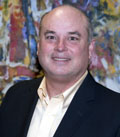 Steve Soltis directs the Leadership Communications function at The Coca-Cola Company. In this role he is responsible for executive communication and positioning for the company’s chairman and CEO and is also the architect of the company’s senior executive speakers bureau. Soltis joined Coca-Cola in September of 2006, after spending 10 years directing executive communications for UPS, and two years as a speechwriter for MCI. Prior to his corporate communications career, Soltis worked in a variety of editorial positions for The Global Network, Harte Hanks, Ackerley Communications and the Metropolitan Washington Airports Authority. In 2006, Soltis was a recipient of the PRSA Silver Anvil Award for B2B Marketing for the work he led in developing UPS’s global customer conference, Longitudes. A graduate of the University of North Texas and Mary Washington College, Soltis also serves on the Advisory Board of the College of Science and Technology at Georgia Southern University. He is the author of two travel guide books and lives in suburban Atlanta with his wife, Stacy, and two children, Annie and Christopher.
Steve Soltis directs the Leadership Communications function at The Coca-Cola Company. In this role he is responsible for executive communication and positioning for the company’s chairman and CEO and is also the architect of the company’s senior executive speakers bureau. Soltis joined Coca-Cola in September of 2006, after spending 10 years directing executive communications for UPS, and two years as a speechwriter for MCI. Prior to his corporate communications career, Soltis worked in a variety of editorial positions for The Global Network, Harte Hanks, Ackerley Communications and the Metropolitan Washington Airports Authority. In 2006, Soltis was a recipient of the PRSA Silver Anvil Award for B2B Marketing for the work he led in developing UPS’s global customer conference, Longitudes. A graduate of the University of North Texas and Mary Washington College, Soltis also serves on the Advisory Board of the College of Science and Technology at Georgia Southern University. He is the author of two travel guide books and lives in suburban Atlanta with his wife, Stacy, and two children, Annie and Christopher.
 Bruce Danielson is a thought leadership consultant who designs and implements strategic communications programs to help companies achieve their next level of growth. He recently completed an 11-year career as Executive Communications Manager at UPS, where he was responsible for message platform development, forum placement, speech writing and message repackaging to support the company’s senior executive communications strategy. Prior to joining UPS, he served as a speechwriter and event manager at MCI. Danielson began his corporate communications career at Harland, serving as Director of Corporate Communications. Away from the world of thought leadership, Bruce plays old-time fiddle and is an avid whitewater canoeist and hiker. He lives in Atlanta with his musical wife.
Bruce Danielson is a thought leadership consultant who designs and implements strategic communications programs to help companies achieve their next level of growth. He recently completed an 11-year career as Executive Communications Manager at UPS, where he was responsible for message platform development, forum placement, speech writing and message repackaging to support the company’s senior executive communications strategy. Prior to joining UPS, he served as a speechwriter and event manager at MCI. Danielson began his corporate communications career at Harland, serving as Director of Corporate Communications. Away from the world of thought leadership, Bruce plays old-time fiddle and is an avid whitewater canoeist and hiker. He lives in Atlanta with his musical wife.
 David Murray writes and speaks about communication—business, political and personal. He’s editor of Vital Speeches of the Day, a monthly collection of the best speeches in the world. He writes about sports, people, politics and travel for magazines, newspapers and websites. publications and websites. And he discusses the communication life at his popular personal blog, Writing Boots.
David Murray writes and speaks about communication—business, political and personal. He’s editor of Vital Speeches of the Day, a monthly collection of the best speeches in the world. He writes about sports, people, politics and travel for magazines, newspapers and websites. publications and websites. And he discusses the communication life at his popular personal blog, Writing Boots.
Practical techniques any manager can use to motivate new behaviors and deliver better business results
Why are managers employees’ preferred source of communication? Because employees crave information that affects their day-to-day lives – information that only their managers can provide. Andy Szpekman, president of AHS Communications, outlines what managers can do to meet employee expectations, become better communicators and be more successful managers.
You’ll learn the four competencies every manager needs, the type of communication employees demand, and proven ways to change people’s attitudes and behaviors. You’ll leave the session with a solid understanding of what separates outstanding managers from the rest, as well as useful tips and simple tools any manager can apply immediately on the job. Whether you manage others or advise those who do, this teleseminar will help you engage your organization’s employees to deliver their best work.
Learning Topics:
- Six things every manager needs to do well
- What to look for when gathering employee feedback
- How to deliver a tough message effectively
- Stupid ideas about communication
- How to convey information, field challenges and brainstorm solutions – in under 15 minutes
Andy answers real-world questions on:
- Companies that are doing a good job at training their managers to be better communicators
- How to effectively measure whether a manager is communicating well
- advice and techniques to help managers be more open and forthright in their communications, even when they may fear repercussions from their management
- Specific advice for how to handle situations in non-public organizations, where laws prevent communications to be less timely than we would like it to be
- How to focus on listening rather than figuring out what you’re going to say when the other person stops talking
- the “huddle technique” to brainstorm solutions right after the change or problem has been communicated to employees
- The 360-degree survey technique to assess the effectiveness of manager communications
- The wisdom of setting up regular employee communication time
Who should purchase:
-
Line managers
-
Functional managers
-
Internal communicators
-
Corporate communicators
-
HR managers
-
Change managers
-
Internal marketers
-
College/university libraries and bookstores
Instructor:
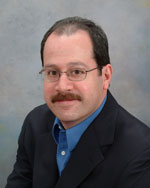 Andy Szpekman provides HR and communication research, strategies and tools to improve business performance. His clients include Bank of America, BC Hydro, Cardinal Health, McKinsey & Co., Microsoft, News Corporation, Scholastic and Wachovia.
Andy Szpekman provides HR and communication research, strategies and tools to improve business performance. His clients include Bank of America, BC Hydro, Cardinal Health, McKinsey & Co., Microsoft, News Corporation, Scholastic and Wachovia.
Earlier in his career, he led HR communication at Bank of America, served as communications manager for a global division of Warner-Lambert, and was a senior HR and communication consultant with Brecker & Merryman, Inc.
Andy is active in the Council of Communication Management and a former officer of the Metropolitan New York Association of Applied Psychology. His work has been featured in national news and business publications and leading trade journals. He holds a B.A. in psychology from William Paterson University and an M.A. in organizational psychology from Columbia University.
How to grow the leadership capacity of your team to meet changing corporate demands
Learn how to cultivate the leadership potential of your staff and in the process become a better leader yourself.
So much to do, so little time. It’s a common complaint of communication managers everywhere. Demands increase while resources dwindle, and we find our value compromised by perpetual busyness.
How to solve this dilemma? The answer lies in leveraging the power of the people who work with you everyday. By developing the leadership abilities of your staff, you bring greater meaning and satisfaction to the work they do and increase the performance of your team and yourself exponentially.
In this seminar, you’ll learn how traditional management approaches limit the effectiveness of your staff and your potential as a leader. Elise discusses current research on the forces of change that make leadership a job for everyone and how you can appeal to the leadership potential of your employees, regardless of their particular areas of strength.
She also looks at some tools and processes you can start using immediately to create an environment of learning and leadership within your team, including your own personal leadership assessment and learning plan for change.
Learning topics:
- How the complexity of today’s business environment requires a new leadership approach by communicators
- The core competencies required for leadership in the practice of communication
- Discovering what motivates staff to excel
- Creating a learning organization within your own team
- Mapping out a learning plan to increase your team’s leadership capacity
- Making the transition from “doing” to “leading”
How-to Handouts in This CD:
- DOING MORE WITH MORE – 17 slides
- Leadership Interviews Exercise
- Core Competencies for Communication Leadership – Personal Checklist
- Core Competencies for Communication Leadership – Personal Learning Plan
Elise answers real-world questions on:
- How to choose the right leadership competencies for developing your staff
- How to balance the disciplines of managing and leading
- How to find the time to develop you staff when you have so many other things to do
- How to make leaders of staff who would rather be followers
- The best tools and channels to communicate with your team about leadership visions, competencies
- Five areas of leadership ability
- Why communicators tend to be too shy about stepping up to the plate as leaders – and how to over come this
- Recommendations on courses or training to advance your communication leadership skills
- Why communicators may be looked over or taken for granted by the executive leadership of organizations
- Common traits of leadership “heroes”
Who should purchase:
- Business leaders
- Corporate Communications
- Marketing
- Advertising
- Internal Communications
- Public Affairs
- Public Relations
- Organizational Development
- Human Resources
- Corporate Strategy and Development
- Senior Management
- College/university libraries and bookstores
Instructor:
 Elise Roaf, MBA, ABC, MC, CHRPhas more than 20 years of experience as a communications professional and consultant in the private and public sector and with nonprofit organizations. Her areas of expertise include strategic communication, change management and organizational development. She has developed curricula, taught courses and facilitated workshops in university and corporate settings and is currently a sessional instructor in organizational communications at Kwantlen University College.
Elise Roaf, MBA, ABC, MC, CHRPhas more than 20 years of experience as a communications professional and consultant in the private and public sector and with nonprofit organizations. Her areas of expertise include strategic communication, change management and organizational development. She has developed curricula, taught courses and facilitated workshops in university and corporate settings and is currently a sessional instructor in organizational communications at Kwantlen University College.
Elise holds a Master of Business Administration specializing in Human Resources Management from Royal Roads University, a Bachelor of Arts from the University of Western Ontario, and a Certificate in Public Relations from the University of Regina.
Her professional designations include an Accredited Business Communicator and a Certified Human Resources Professional. She has received numerous awards for excellence in business communication. Among them are the Master Communicator Award, the highest honor awarded to a Canadian member of the International Association of Business Communicators, and the IABC Chairman’s Award for contributions to the association and the profession as a whole.
The best way to communicate with people you are trying to lead is very often through a story.
More and more organizations are realizing that stability and predictability are no longer reasonable assumptions. In fact, the number one problem of today’s managers is the difficulty in getting their organizations to adapt to a competitive environment that is neither stable nor predictable. Yet while change is irresistible, the organization often seems immovable.
Drawing on his experience as program director of Knowledge Management at the World Bank from 1996-2000 and his work with many of the top organizations in the world, Steve Denning shows how to identify and craft a springboard story; i.e., a story that will spark action. Using a simple template, you will be equipped to get started on crafting your own springboard stories.
What you will learn:
- The importance of storytelling
- Appropriate situations for telling stories
- Why storytelling can handle leadership challenges for which conventional command-and-control techniques are impotent
- The essential ingredients of a springboard story — i.e., a story to communicate a complex idea and galvanize action
- How and why storytelling can communicate complex ideas, and why stories are so persuasive
- How to find and craft springboard stories for your organization
- How to use storytelling to ignite your career by becoming an authentic leader
- A 10-point template for crafting your stories
- Eight types of stories that you can put to work for you
- How storytelling changed the way the World Bank shared knowledge
Who should purchase:
This exceptional learning opportunity is designed for managers and professionals in:
- Corporate Communications
- Marketing
- Advertising
- Internal Communications
- Public Affairs
- Public Relations
- Organizational Development
- Human Resources
- Corporate Strategy and Development
- Senior Management
- Anyone, anywhere in an organization
It’s also an important addition to the offerings of college/university libraries and bookstores.
Instructor:
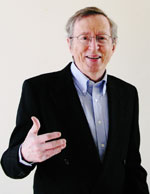 Steve Denning is the former program director of Knowledge Management at the World Bank. He now works with organizations in the U.S., Europe, Asia and Australia on knowledge management and organizational storytelling.
Steve Denning is the former program director of Knowledge Management at the World Bank. He now works with organizations in the U.S., Europe, Asia and Australia on knowledge management and organizational storytelling.
Steve is the author of several books on organizational storytelling, including:
- The Leader’s Guide to Storytelling: Mastering the Art and Discipline of Business Narrative (Jossey-Bass in April 2005).
- Squirrel Inc: A Fable of Leadership Through Storytelling (Jossey-Bass, 2004), a fable that elaborates seven different kinds of organizational storytelling
- The Springboard: How Storytelling Ignites Action in Knowledge-Era Organizations (Butterworth Heinemann, 2000), which describes how storytelling was used as a powerful tool for organizational change and knowledge management at the World Bank
Steve was born and educated in Sydney, Australia. He studied law and psychology at Sydney University and worked as a lawyer in Sydney for several years. He did a postgraduate degree in law at Oxford University in the U.K. before joining the World Bank, where held a number of positions from 1996 to 2000.
In 2000, Steve was named as one of the world’s “10 Most Admired Knowledge Leaders” (Teleos). In 2003, he was ranked as one of the world’s Top Two Hundred Business Gurus: Davenport & Prusak, “What’s The Big Idea?” (Harvard, 2003). In 2005, his book, The Leader’s Guide to Storytelling, was selected by the Innovation Book Club as one of the 12 most important books on innovation in the last few years.
Steve is a Senior Fellow at the James MacGregor Burns Leadership Academy at the University of Maryland.
For more than two decades, through his ongoing study, The Search for a Simpler Way, Bill Jensen has been researching how our managers and workforce communicate with each other.
In the past few years, something critical has happened: They have hacked our capabilities.
They can do what we do. Often, better than we can. How do we leverage that, instead
of fighting it? How can we learn from them?
Two-way communication means listening to what the workforce has to tell us. If you are
interested in learning from them, this is the most crucial webinar you will attend all year!
What You Will Learn:
- What benevolent hacking is, and how we are being hacked
- How companies waste massive amounts of time and energy…
and how we are complicit in this act - The top three things you should be doing to save your
organization from itself - Practical tips for getting started, and getting praise from above
Who Should Attend
This webinar ideal for communicators with:
- VPs, Directors and managers of internal communications, social media, marketing,
corporate communications, public relations, and branding - Anyone responsible for integrating external communications — marketing, sales, customer service, branding, etc. — with internal change efforts
Presented by:
 Bill Jensen is today’s foremost expert on work complexity and cutting through clutter to what really matters. He has spent the past two decades studying how work gets done. (Much of what he’s found horrifies him.) Known as Mr. Simplicity for his first book, Bill has written five best-selling books based on his research. His latest, Hacking Work, was hailed as one of 2010’s Top Ten Breakthrough Ideas by Harvard Business Review. It reveals an underground army of benevolent hackers — breaking all sorts of rules so everyone can do great work. Bill is CEO of The Jensen Group: his list of clients includes the top companies in the world and he is constantly on the road, speaking in places from tech-shops in San Fran to sweatshops in Asia to palaces in Europe. Most importantly: Bill’s personal life fantasy is to bicycle around the globe via breweries.
Bill Jensen is today’s foremost expert on work complexity and cutting through clutter to what really matters. He has spent the past two decades studying how work gets done. (Much of what he’s found horrifies him.) Known as Mr. Simplicity for his first book, Bill has written five best-selling books based on his research. His latest, Hacking Work, was hailed as one of 2010’s Top Ten Breakthrough Ideas by Harvard Business Review. It reveals an underground army of benevolent hackers — breaking all sorts of rules so everyone can do great work. Bill is CEO of The Jensen Group: his list of clients includes the top companies in the world and he is constantly on the road, speaking in places from tech-shops in San Fran to sweatshops in Asia to palaces in Europe. Most importantly: Bill’s personal life fantasy is to bicycle around the globe via breweries.
There’s no shortage of theory, hyperbole and pure BS (or baloney, or hot air) about social media marketing. Learn what social media’s challenges and opportunities really are – in plain English – via case studies from three experts who are in the trenches with household name corporations.
Heads up … this is not another web conference about social media tools such as blogs, vlogs, podcasts, social networks and microsharing. The technology is important, of course, but not nearly as crucial as the need to understand how to engage in instant, two-way conversations stripped of safe corporate-speak or spin. Grasping that reality and executing it is the sweet spot of social media, and that’s where this webinar is focused. Learn by successful examples and studies of major brands who have pioneered in the space.
What You Will Learn:
- What your audience expects from your social media efforts
- What resistance you’ll meet from inside your own organization — and how to overcome it
- Top 6 reasons your company should not blog
- Top 5 reasons you should have a blog
- Why most corporate social networks fail
- How smart companies are using social networks now and how you can too
- The way to get your company banned from a social network
- Which social networks matter and which ones don’t
Who Should Attend
This webinar is primarily aimed at individuals responsible for corporate communications, public relations, corporate affairs, human resources, employee communications, media relations, and issues management. It will help those in the early stages of implementing or learning about social media, although it will also help more advanced practioners to focus their efforts. It is especially suitable for:
- Small and mid-sized business leaders
- Corporate executives who are new to social media
Presented by:
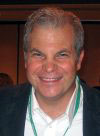 Christopher Barger is Director, Global Communications Technology. In this role, he leads the social media (blogging, podcasting, user-generated content, wikis, social networking, etc.) efforts for General Motors – both in developing the company’s own content and building relationships with influential voices outside the company. Barger is a communications professional with nearly 10 years experience at Fortune 20 companies. He is a seasoned media spokesperson, communications strategist, and public speaker. Barger’s specialties are “Social Media”/Web 2.0, social networking and media; public speaking.
Christopher Barger is Director, Global Communications Technology. In this role, he leads the social media (blogging, podcasting, user-generated content, wikis, social networking, etc.) efforts for General Motors – both in developing the company’s own content and building relationships with influential voices outside the company. Barger is a communications professional with nearly 10 years experience at Fortune 20 companies. He is a seasoned media spokesperson, communications strategist, and public speaker. Barger’s specialties are “Social Media”/Web 2.0, social networking and media; public speaking.
 B.L. Ochman helps companies integrate social media tools and blog advertising into their communications to engage their audience and increase their sales. She is an Internet marketing strategist to Fortune 500 companies including IBM, McGraw-Hill, American Greetings, Ford Motors, Simon & Schuster, Cendant, Kaneka Corporation and others. She is internationally respected blogger whose blog about Internet marketing, What’s Next Blog, is rated in the top 50 in the world by Ad Age Power 150, where she also is Number One among women business bloggers. She heads the creative team of whatsnextonline.com. Her articles and case studies about Internet marketing trends appear in MarketingProfs, MediaPost, Businessweek Online, and several other publications. Before turning her talent to the Internet in 1995, Ochman ran an award-winning New York PR firm that she grew to one of the 100 largest independent PR firms in the US, with clients including Stew Leonard’s, Miracle-Gro Plant Food, The American Dairy Association, Kaneka Corporation and many more.
B.L. Ochman helps companies integrate social media tools and blog advertising into their communications to engage their audience and increase their sales. She is an Internet marketing strategist to Fortune 500 companies including IBM, McGraw-Hill, American Greetings, Ford Motors, Simon & Schuster, Cendant, Kaneka Corporation and others. She is internationally respected blogger whose blog about Internet marketing, What’s Next Blog, is rated in the top 50 in the world by Ad Age Power 150, where she also is Number One among women business bloggers. She heads the creative team of whatsnextonline.com. Her articles and case studies about Internet marketing trends appear in MarketingProfs, MediaPost, Businessweek Online, and several other publications. Before turning her talent to the Internet in 1995, Ochman ran an award-winning New York PR firm that she grew to one of the 100 largest independent PR firms in the US, with clients including Stew Leonard’s, Miracle-Gro Plant Food, The American Dairy Association, Kaneka Corporation and many more.
 Mike Prosceno runs “new” media relations at SAP. He is also a social media evangelist inside the company promoting both the internal use of social media for productivity gains as well as its use externally for reputation enhancement. Having been in corporate or marketing communications for 18 years he has held a variety of management and non-management positions in the IT, manufacturing and financial-services industries.
Mike Prosceno runs “new” media relations at SAP. He is also a social media evangelist inside the company promoting both the internal use of social media for productivity gains as well as its use externally for reputation enhancement. Having been in corporate or marketing communications for 18 years he has held a variety of management and non-management positions in the IT, manufacturing and financial-services industries.
Attendee comments:
- “BL definitely added value for my particular perspective on what I am trying to accomplish.
- “Great overview by Ms. Ochman. Good, practical experience from GM.”
Learn how to gain control of your production processes, no matter how obstacle-ridden they might be.
The creative fun of communicating can be quickly overshadowed by the headaches of getting things through the process. Whether the source of your migraine is source reviews, management approvals or just keeping all the moving parts in sync, relief is on the way. You can gain control of your production processes, no matter how obstacle-ridden they might be, and this session teaches you how!
The six-person Editorial Services team at Philip Morris USA produces hundreds of stories, speeches and other writing projects per year. Add to this huge volume the challenges of working in a closely watched industry and the approval process becomes extremely complex. Hear how this team created tools — from a Job Request Form to an online Content Tracker — that keep stories moving at an amazing rate. Find out how they use client feedback, not only to improve their writing but also to improve their content management tools.
Learning topics:
- Why and how to create content management tools, and why you should keep tweaking them
- How to master the tactics of communication production, while staying focused on strategy
- How to minimize management and legal approval headaches — before they start
- How to manage internal clients’ expectations
- How to influence others in your company to follow your production processes
Robert and Denise answer real-world questions on:
- The decision to outsource writing and the tools that have helped make this work smoothly
- The response rate on post-work survey, and how to encourage clients to fill the forms
- Phillip Morris’ Content Tracker
- Additional tools in the works
- Integrating proofreading into the system and other quality control measures
- Typical turnaround time on review processes
- Getting information released
Who should purchase:
This practical, information-packed learning opportunity is ideal for managers and professionals in:
- Corporate Communications
- Internal Communications
- Public Affairs
- Web Management
- Speechwriting
- Publication Management
- Anyone who is responsible for producing content
- College/university libraries and bookstores
About the Instructors:
 Robert J. Holland, ABC, is owner of Holland Communication Solutions LLC in Richmond, Va. After more than 12 years in corporate communications with AT&T, Lucent Technologies and Capital One, Robert formed his company in 2000 to help clients align communication programs with business goals. He has helped leading organizations such as the Federal Reserve Bank of Richmond, Freddie Mac, Media General and Wells Fargo with services ranging from strategic communication planning to measurement. He is a frequent regional and national speaker, and he writes an award-winning column, “Communication at Work,” for Richmond.com. He is author of Prove Your Worth: The Complete Guide to Measuring the Business Value of Communication, published by Ragan Communications. Robert is also co-leader of the Communitelligence Internal Communications community.
Robert J. Holland, ABC, is owner of Holland Communication Solutions LLC in Richmond, Va. After more than 12 years in corporate communications with AT&T, Lucent Technologies and Capital One, Robert formed his company in 2000 to help clients align communication programs with business goals. He has helped leading organizations such as the Federal Reserve Bank of Richmond, Freddie Mac, Media General and Wells Fargo with services ranging from strategic communication planning to measurement. He is a frequent regional and national speaker, and he writes an award-winning column, “Communication at Work,” for Richmond.com. He is author of Prove Your Worth: The Complete Guide to Measuring the Business Value of Communication, published by Ragan Communications. Robert is also co-leader of the Communitelligence Internal Communications community.
Denise Koenig is manager of Editorial Services for Philip Morris USA in Richmond, Va. She has worked for the company since 1984, from coordinating and editing plant-level communications in Louisville, Ky., to managing communications for multiple manufacturing plants in Richmond. Beginning in 2003, she built the team of five editorial consultants she now manages, all of whom work in their individual offices. Denise manages the team’s production of content for executive communications, the pmusa.com Web site, the intranet, speeches and special publications. She is a graduate of Ball State University with a bachelor’s in journalism and political science.
Is your communication planning approach connected to the goals of your business? Can you measure the value of your communication planning efforts once the plan has been executed? So often as communication professionals we are asked to create plans that focus on communication tactics, without assessing the real strategic impact of what the plan will accomplish. This Webinar provides a step-by-step approach to developing a communication plan that is truly strategic and connected to your business.
What You Will Learn:
- Creating a vision of the desired future state, based on the current situation
- Identifying what is important to focus on, based on the vision
- Developing clear objectives based on your priorities
- Aligning messaging, strategy and tactics to your objectives
- Gaining buy in for your plan, based on the impact it will have on the business
Questions that will be answered:
- What does is mean to be strategic?
- How do you develop a meaningful vision?
- How do you determine which elements of the vision are most important?
- What are the strategies and tactics that will have the most impact?
- How do you gain support for your plan?
- What are effective ways to measure impact?
Who Should Purchase?
- Communications professionals who want to enhance their partnership and value to the business.
Instructor:
 Barbara Fagan-Smith is the founder and CEO of ROI Communications, Inc., an award-winning internal communications consulting firm focused on helping large organizations adapt and succeed in times of change. Building on more than two decades of experience in corporate communications and journalism, she leads ROI’s work with Fortune 500 companies, helping them develop and manage effective internal communication projects that deliver clear business results.Since its launch in 2001, ROI Communications has worked with a broad array of major clients, including Hewlett- Packard, Sun Microsystems, Adobe Systems, Blue Shield of California, Cisco Systems, The Gap, Maxtor, Oak Technology and DreamWorks. ROI Communications was most recently recognized with multiple awards from the American Society of Professional Communicators and the International Association of Business Communicators (IABC) for its standard-setting work in change communications.Prior to founding ROI Communications, Barbara was the director of employee and electronic communications at Quantum Corporation and director of interactive communications at Simply Interactive, Inc.
Barbara Fagan-Smith is the founder and CEO of ROI Communications, Inc., an award-winning internal communications consulting firm focused on helping large organizations adapt and succeed in times of change. Building on more than two decades of experience in corporate communications and journalism, she leads ROI’s work with Fortune 500 companies, helping them develop and manage effective internal communication projects that deliver clear business results.Since its launch in 2001, ROI Communications has worked with a broad array of major clients, including Hewlett- Packard, Sun Microsystems, Adobe Systems, Blue Shield of California, Cisco Systems, The Gap, Maxtor, Oak Technology and DreamWorks. ROI Communications was most recently recognized with multiple awards from the American Society of Professional Communicators and the International Association of Business Communicators (IABC) for its standard-setting work in change communications.Prior to founding ROI Communications, Barbara was the director of employee and electronic communications at Quantum Corporation and director of interactive communications at Simply Interactive, Inc.
Before her career in corporate communications, Barbara worked as a London-based television producer for ABC News, where she covered the revolutions in Eastern Europe and the 1991 Gulf War. Earlier, she covered international business and produced national radio programs for ABC. She holds a B.A. in Journalism and Communications from Humboldt State University.
If you think performance counts now, you ain’t seen nothin’ yet! Jim Shaffer, who pioneered the results-driven approach to managing communication, will explain what others have done to become indispensable to their leaders, because they are over and over again putting money in their leaders pockets. Literally! Jim’s lively and provocative CD will reveal what companies are doing to surgically shift their priorities and focus on those parts of the organization that can drive performance results most. Using real case studies, Jim will show how companies can generate two- and three-thousand-percent returns on their internal communication investments. He’ll explore the Three Stages of Organizational Communication Maturity and explain how a department can attain increasingly higher levels of operating and financial performance.
Learn How:
- FedEx, Owens Corning and others have created significant performance improvements with returns on their investments exceeding 1,400 percent
- Honeywell cut its billing cycle by 10 days and eliminated 1.4 million process steps while improving quality
- Sara Lee reduced waste by 18 percent in five weeks at one its bakeries
Learn Why:
- Dave Brown’s CEO said: “We are absolutely convinced that there’s a competitive advantage to be gained by engaging our people through better managed communication. We’ve seen it pay off already in measurable improvements in costs and productivity.”
- Owens Corning’s senior vice president of manufacturing said, “We’ll take as many 700-percent returns as we can get.”
Discussion Topics:
- Why the communication function in every business must measurably increase the value it adds—or die
- What other companies are doing about it and how they’ve moved from an output to an outcome-generating organization
- What you can do next to take your department to the next level on the maturity curve
- What questions to ask to identify what matters most to your business
- How to set up an outcome-based project that generates huge financial returns
- How to measure your impact and your return
- How to shift your work from low value-adding to high value-adding
- How to get junk off your plate, because it doesn’t contribute to the bottom line
Who Should Purchase:
- Corporate communications
- Non-profit communications
- Media relations
- Public affairs
- Public relations
Instructor:
 Jim Shaffer is one of the world’s leading thought leaders, consultants and authors, helping businesses engage their people to achieve ultra-high levels of organizational performance. His book, The Leadership Solution (McGraw-Hill), has been hailed by leading CEOs as “invaluable for someone wanting to lead an organization into the future” and a “practical common-sense look at how leaders use communication to solve business problems.”
Jim Shaffer is one of the world’s leading thought leaders, consultants and authors, helping businesses engage their people to achieve ultra-high levels of organizational performance. His book, The Leadership Solution (McGraw-Hill), has been hailed by leading CEOs as “invaluable for someone wanting to lead an organization into the future” and a “practical common-sense look at how leaders use communication to solve business problems.”
Jim’s focus is on improving people performance: helping business leaders execute better by creating engaged people, who think and act like business owners. He blends his unique background in general management, product line management, organizational change and communication management and helps clients get at the root cause of people performance problems. His track record includes significant, quantifiable improvements in quality, service, costs, productivity and speed through a more engaged workforce.
Jim leads the Jim Shaffer Group, a consultancy devoted to creating compelling places to work—where people are actively engaged in building and sustaining winning organizations. Previously, he was a principal, senior consultant and leader of a Towers Perrin center of excellence. He was one of the architects and leading practitioners of the firm’s global change management consulting practice. Prior to that, he served as press secretary to Kansas Governor Robert B. Docking, headed public relations and advertising in two Chicago-based businesses, and served as a marketing product line manager.
Jim is a recipient of the International Association of Business Communicators’ prestigious Fellow award, and he was named “Communicator of the Year” by IABC’s Washington, D.C. chapter. Jim is a regular contributor to many business publications and a frequent speaker at leadership groups and professional associations. He has taught in the graduate schools at George Washington University and The University of St. Thomas. His clients have included IBM, The Mayo Clinic, Verizon, Toyota, FedEx and many more.
How and why FedEx Employee Communications moved from focusing on creating more news to creating better business outcomes.
This webinar features Terry Simpson, head of employee communications for FedEx Express. After conducting a global communication assessment, Terry and her colleagues decided that the communication function needed to focus more on creating business outcomes rather than distributing more news. Working with FedEx Express leadership she identified and conducted a project in Los Angeles to improve US export volume through better managed communication. The result: 15% increase in volume and 23% increase in revenues with an overall 1,400 ROI.
What You Will Learn:
- How to work with senior leadership and a lot of data to identify opportunities to improve performance through better managed communication
- How to search for opportunities within the white spaces—the areas between functions and disciplines
- How to bring disparate groups together to improve performance through enhanced communication
- How to recognize root causes of performance problems
- The powerful role rewards play in communicating what’s important
- How to take a success and create an even bigger one with five more locations.
Questions that are answered:
- What’s the difference in managing communication to create output—a distribution business—and managing it to create outcomes—a solutions business?
- Is there a role for traditional communication practitioners in this process?
- What additional skills and knowledge do I need to move to this new level?
- How do I get started?
- How do I pick the right project that practically assures success?
- What’s in it for me if I make the shift? More money? More career opportunities? More fame?
- What’s the best way as a communication manager to move from output to focusing on solutions?
- What did FedEx stop doing when it embarked on this project? This goes to the question of staffing – were additions made to the department?
- Did you use any formal media channels to bolster your face-to-face solutions processes?
- Where do you go to get training to lead your department in this direction? What disciplines should you study?
- What pushback do you hear from communicators when you present this message? What’s the best way as a communication manager to move from output to focusing on solutions?
Who Should Purchase:
- Communications professionals who want to enhance their partnership and value to the business.
Instructor:
 Jim Shaffer is one of the world’s leading thought leaders, consultants and authors, helping businesses engage their people to achieve ultra-high levels of organizational performance. His book, The Leadership Solution (McGraw-Hill), has been hailed by leading CEOs as “invaluable for someone wanting to lead an organization into the future” and a “practical common-sense look at how leaders use communication to solve business problems.”
Jim Shaffer is one of the world’s leading thought leaders, consultants and authors, helping businesses engage their people to achieve ultra-high levels of organizational performance. His book, The Leadership Solution (McGraw-Hill), has been hailed by leading CEOs as “invaluable for someone wanting to lead an organization into the future” and a “practical common-sense look at how leaders use communication to solve business problems.”
Jim’s focus is on improving people performance: helping business leaders execute better by creating engaged people, who think and act like business owners. He blends his unique background in general management, product line management, organizational change and communication management and helps clients get at the root cause of people performance problems. His track record includes significant, quantifiable improvements in quality, service, costs, productivity and speed through a more engaged workforce.
Terry Simpson has worked in the Communications field for over 30 years in every area including broadcast, video, print, web sites, event management, strategy and content development. Terry is leading the change at FedEx Express and using communication solutions to solve business problems.










 David Murray
David Murray